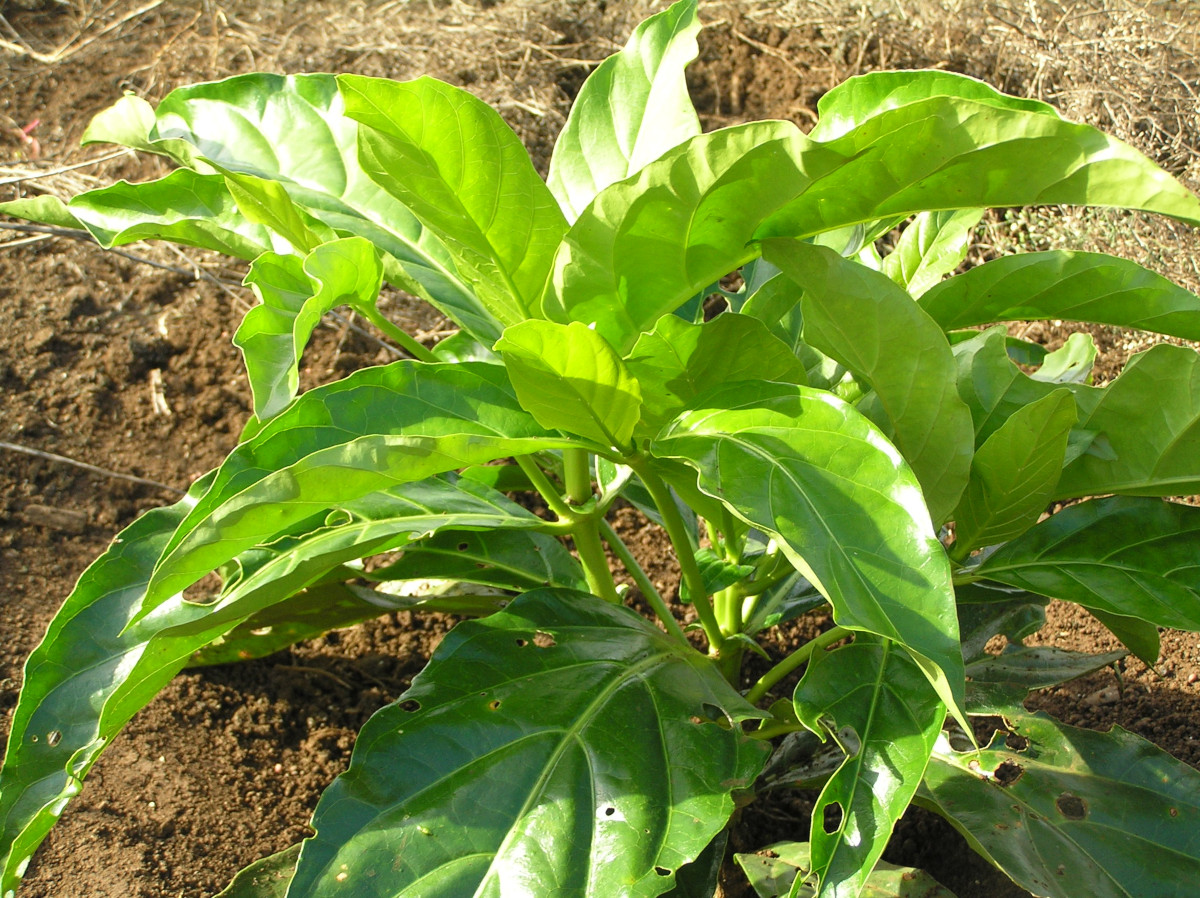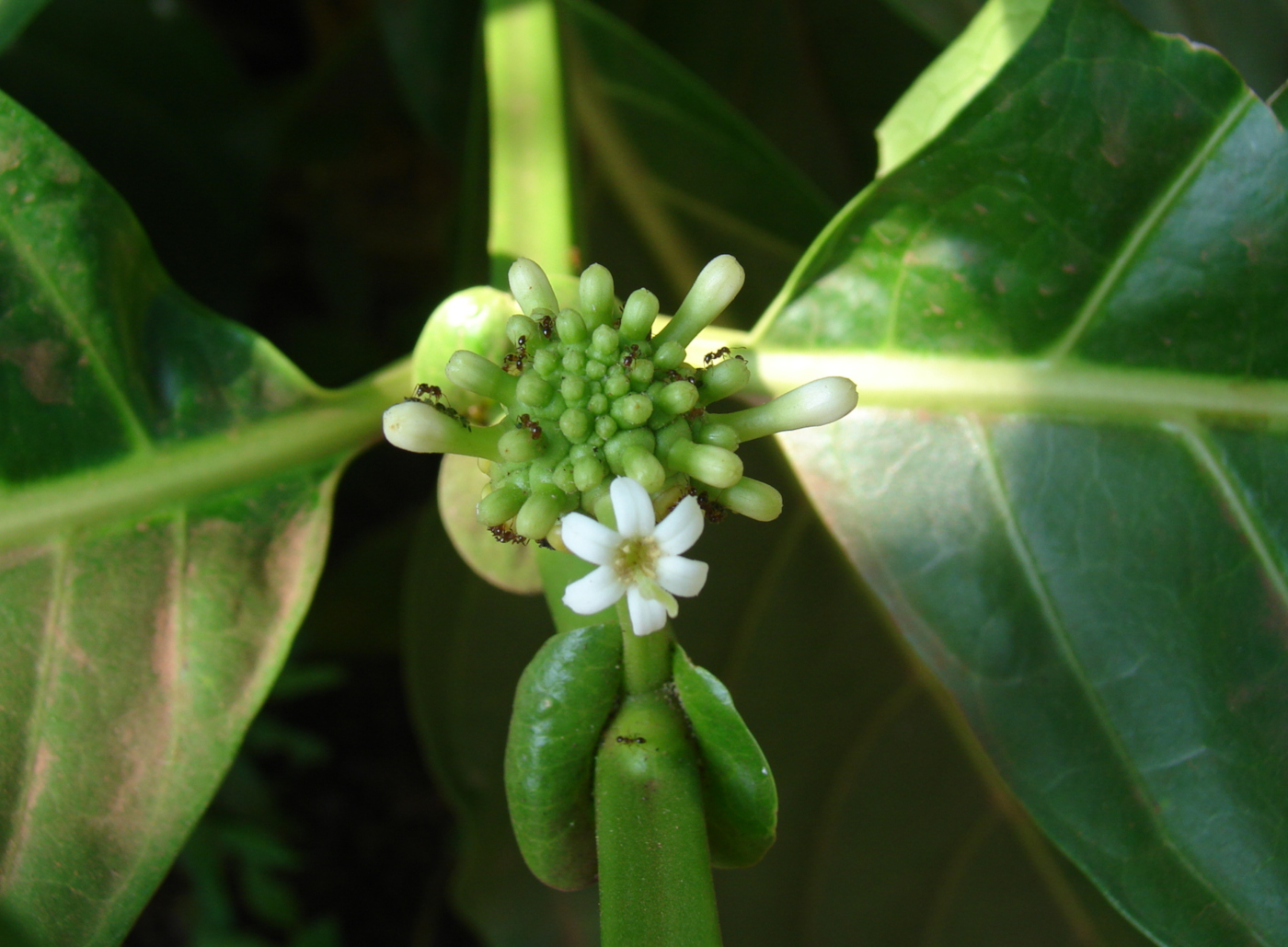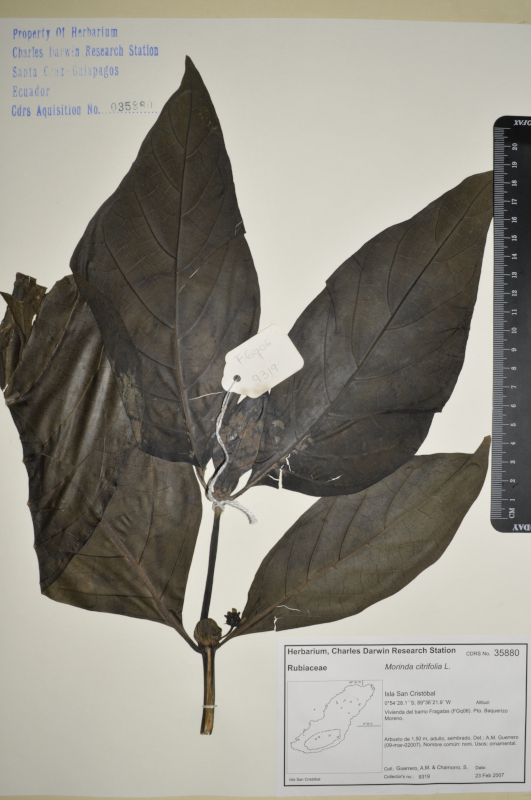Galapagos Species Database
The Galapagos Species Database shares the information about the species from our Natural History Collections.
Morinda citrifolia
noni, fruta del diablo, mora de la India, Indian mulberry




The noni is a small evergreen tree with large glossy leaves and can grow from 3 to 10 m in height. The cream coloured fruit are knobbly and have unpleasant smell when ripe.
The noni is a small evergreen tree with large glossy leaves that can grow from 3 to 10 m in height. The cream coloured fruit are knobbly and have unpleasant smell when ripe. The air-chambered seeds can remain viable after floating in water for months. The species is very tolerant and can be found growing on bare lava fields. It is commonly cultivated for the medicinal properties of its fruit.
Domain
Eukaryota
Kingdom
Plantae
Phylum
Magnoliophyta
Class
Magnoliopsida (= Dicotyledoneae)
Order
Gentianales
Family
Rubiaceae
Genus
Morinda
Species
citrifolia
Taxon category: Accepted
Origin: Introduced - established
Year of first record: 2006
Mode of introduction: Intentional
Introduction Pathway: Intentional
Subpathway: Agriculture/Horticulture
Introduced status: Human dependent
Invasive status: No data
Impact in Galapagos: The ability to colonise bare lava fields makes it a species of concern in the Galapagos.
Impact elsewhere: Although not considered invasive in most places, this hardy plant is considered a weed for its ability to persist and disperse in spite of very harsh conditions.
Control methods elsewhere: Seedlings should be pulled manually. Juveniles and adults should be treated with herbicide.
Known Pest elsewhere: Indonesia, Australia
Habitat preferences: The noni is a very hardy species that can be found growing on bare lava fields. Tolerant of salty soil and salt spray. Moderately shade tolerant, and can grow in both forested and open areas.
Trophic role: Primary producer
Reproductive biology: The noni is capable of flowering throughout the year. The air-chambered seeds can remain viable after floating in water for months. Can propogate through both seeds and cuttings.
Growth form: Trees
Distribution origin: Pantropical
Distribution classification: Paleo-tropical
Economic Use: Commonly cultivated for the medicinal properties of its fruit.
Map of specimen collection localities or observation records for this species in our collections database.
Distribution: Currently restricted to rural and urban areas on San Cristobal and Santa Cruz.
- Tropicos.org. (2017) Database of Missouri Botanical Garden. Tropicos.org. Missouri Botanical Garden. 06 Oct 2017 <http://www.tropicos.org
- Funk, V.T. Hollowell, T., Berry, P., Kelloff, C. & Alexander, S.N. (2007) Checklist of the Plants of the Guiana Shield (Venezuela: Amazonas, Bolivar, Delta Amacuro; Guyana, Surinam, French Guiana). Contributions from the United States National Herbarium 55: 1-584.
- CONABIO (2009) Catálogo taxonómico de especies de México. Cap. nat. México 1.
- Stevens, W.D. Ulloa, C., Pool, A., & Montiel, O.M. (2001) Flora de Nicaragua. Monogr. Syst. Bot. Missouri Bot. Gard. 85: i–xlii, 1–2666.
- Guézou, A. Trueman, M., Buddenhagen, E., Chamorro, S., Guerrero, A.M., Pozo, P., Atkinson, R. (2010) An extensive Alien Plan Inventory from the Inhabited Areas of Galapagos Plos One/ www.plosone.org. Volume 5/ Issue 4/e10276
You are welcome to download and use the information found in this page, acknowledging its source.
This page should be cited as follows:
"Galapagos Species Database, Morinda citrifolia", dataZone. Charles Darwin Foundation, https://datazone.darwinfoundation.org/en/checklist/?species=2126. Accessed 20 August 2025.


Dispersal propagule: Fruit